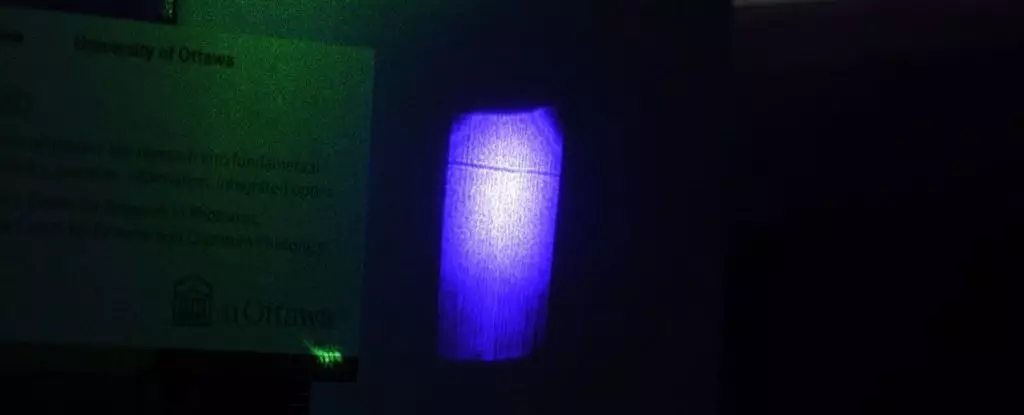Shadows are a ubiquitous phenomenon resulting from the interplay of light and opaque objects. In a universe illuminated by countless sources of light, the interaction of photons with matter creates zones of darkness that manifest as shadows. These regions signify areas where light fails to penetrate due to barriers in its path. This conventional understanding serves as a foundation for exploring an enigmatic discovery: the potential for light beams, particularly lasers, to form shadows of their own under specific conditions.
Recent findings challenge preconceived notions about how light behaves. Interestingly, researchers have demonstrated that a laser beam can navigate through certain transparent materials, creating an effect akin to casting its own shadow. This phenomenon arises when two laser beams intersect at precise angles. Under typical circumstances, the interactions between photons are largely non-interactive; when beams cross paths, they typically move through each other without any noticeable effect, much like multiple flashlight beams illuminating the same space without altering one another’s trajectories.
Physicist Raphael Abrahão and his team embarked on this exploration during their investigations into the behavior of light in nonlinear optical materials. These materials possess behaviors that deviate from linear interactions, allowing for phenomena like absorption, amplification, and self-focusing. It was during a casual discussion that the team contemplated whether light beams could interact to produce a form of shadow, motivating a quest for experimental validation.
To probe this concept, the researchers selected ruby, a well-known medium in nonlinear optics, as the environment where their experiment would unfold. The setup involved firing two distinct laser beams—one blue and one green—at the ruby. The blue laser, upon entering the ruby, adorned a projection surface with a vibrant glow. Meanwhile, the complementary green laser penetrated the ruby perpendicularly, striking the material’s atomic structure.
The interaction between these two beams yielded an extraordinary outcome. Whenever the green light encountered the ruby’s atoms, a fascinating exchange of energy transpired as electrons shifted within their orbits. This interaction profoundly disrupted the path of the blue light, effectively crafting a shadow of the green laser beam where the blue laser’s luminosity diminished—creating a stark contrast on the surface illuminated by the blue light.
Remarkably, this resulting dark line manifested as an authentic shadow. It demonstrated clarity sufficient for detection by the human eye and adhered to the dimensions of the surface upon which it was cast. More astonishingly, as the researchers moved the green laser beam, the shadow shifted in tandem, reinforcing the phenomenon’s classification as a true shadow.
This discovery goes beyond simple observation; it prompts a reevaluation of long-held beliefs about light and shadows. As Abrahão articulates, this unexpected behavior of laser beams expands the current understanding of light-matter interactions. It reveals uncharted territory where light can exert influence beyond what was previously imagined, thereby paving the way for innovative applications in technology and materials science.
The implications of this research could transform optical engineering, possibly leading to novel technologies that leverage this light-induced shadow-casting effect. This innovative concept might inspire advancements in real-time imaging, optical data transmission, and even computational photography, revolutionizing how light is harnessed in various fields.
Our understanding of light and shadows is intertwined and ever-evolving. The intriguing phenomenon of lasers projecting shadows opens new questions about the nature of photons and their interactions with the materials around them. As researchers continue to unravel these complexities, we may find ourselves at the brink of a technological renaissance—one that hinges on the very essence of the light that surrounds and illuminates us. The implications of this research are profound, reminding us that even the simplest aspects of our universe, like shadows, can harbor unexpected mysteries.

Leave a Reply